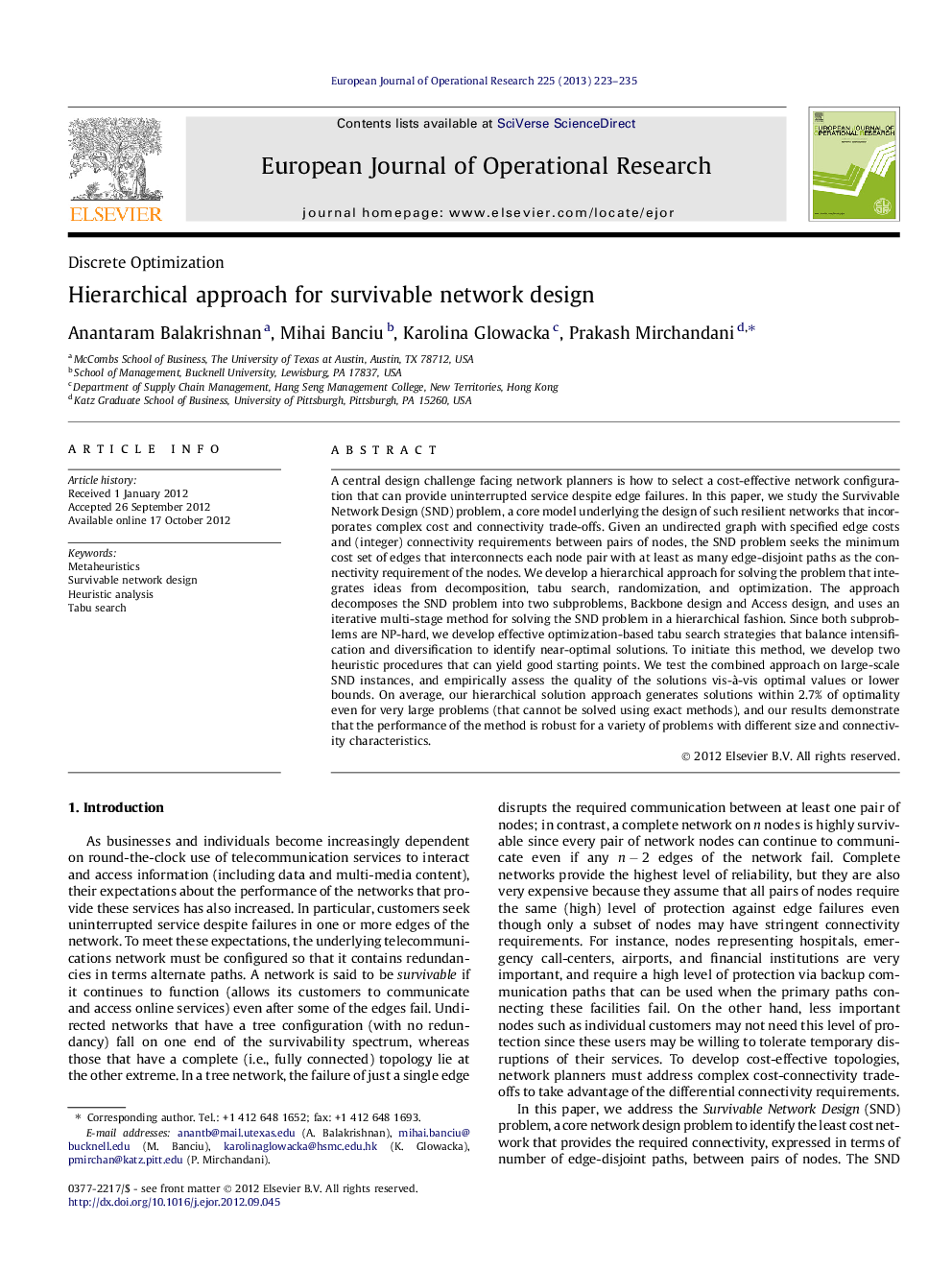| Article ID | Journal | Published Year | Pages | File Type |
|---|---|---|---|---|
| 480004 | European Journal of Operational Research | 2013 | 13 Pages |
A central design challenge facing network planners is how to select a cost-effective network configuration that can provide uninterrupted service despite edge failures. In this paper, we study the Survivable Network Design (SND) problem, a core model underlying the design of such resilient networks that incorporates complex cost and connectivity trade-offs. Given an undirected graph with specified edge costs and (integer) connectivity requirements between pairs of nodes, the SND problem seeks the minimum cost set of edges that interconnects each node pair with at least as many edge-disjoint paths as the connectivity requirement of the nodes. We develop a hierarchical approach for solving the problem that integrates ideas from decomposition, tabu search, randomization, and optimization. The approach decomposes the SND problem into two subproblems, Backbone design and Access design, and uses an iterative multi-stage method for solving the SND problem in a hierarchical fashion. Since both subproblems are NP-hard, we develop effective optimization-based tabu search strategies that balance intensification and diversification to identify near-optimal solutions. To initiate this method, we develop two heuristic procedures that can yield good starting points. We test the combined approach on large-scale SND instances, and empirically assess the quality of the solutions vis-à-vis optimal values or lower bounds. On average, our hierarchical solution approach generates solutions within 2.7% of optimality even for very large problems (that cannot be solved using exact methods), and our results demonstrate that the performance of the method is robust for a variety of problems with different size and connectivity characteristics.
► Designing networks that can withstand edge failures involve complex cost and connectivity trade-offs. ► Our novel hierarchical approach exploits the solution structure to decompose the problem into two NP-hard subproblems. ► We develop optimization-based metaheuristics combining tabu search, randomization, and exact methods. ► Extensive computational experiments demonstrate that the solution method is fast and produces near-optimal solutions. ► Our methodology is robust and quickly solves problems with diverse connectivity characteristics and sizes.
